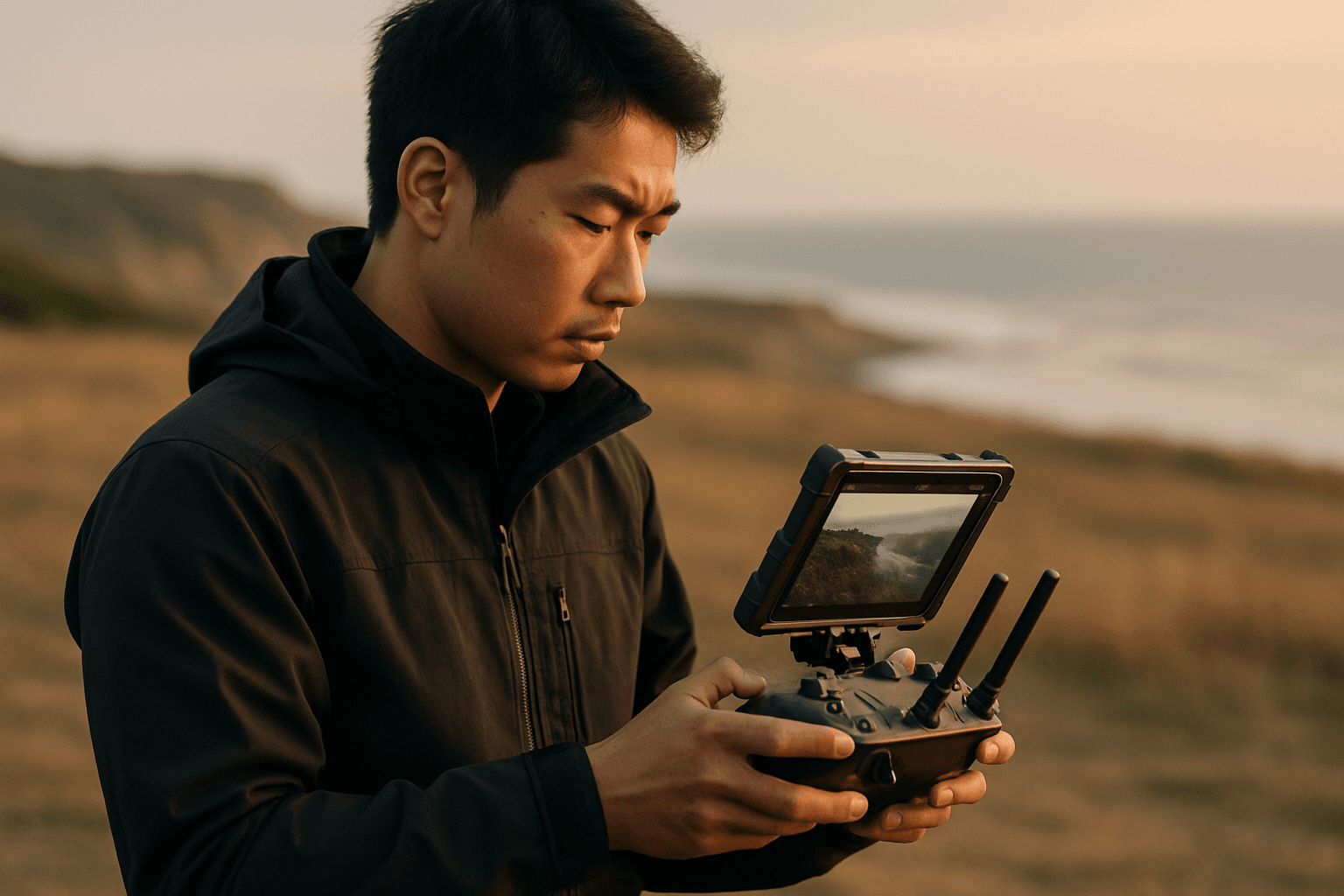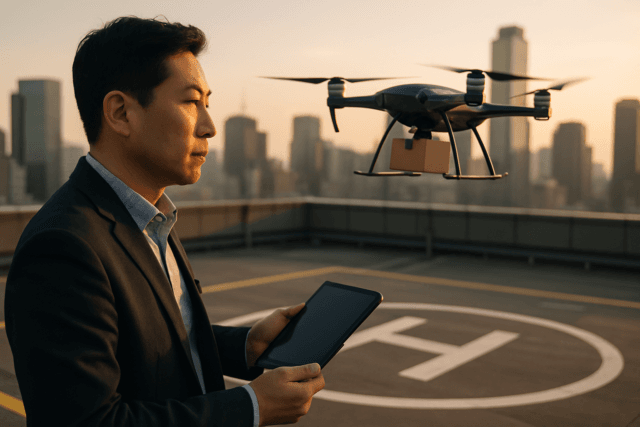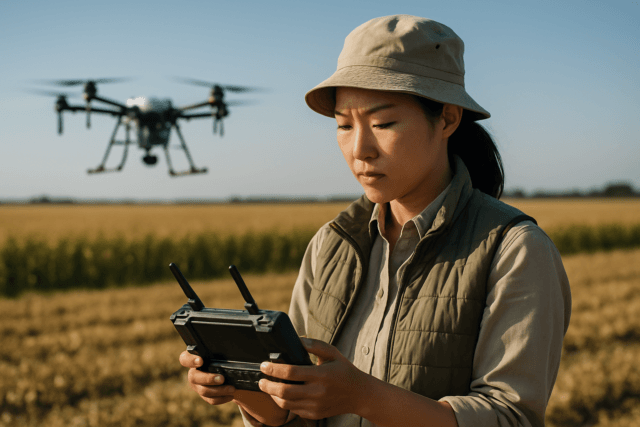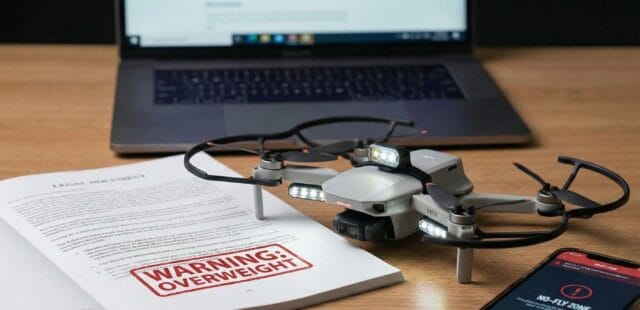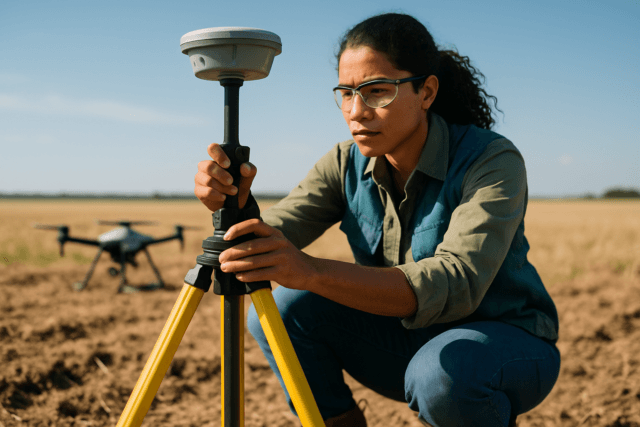Capturing breathtaking aerial videography with drones has become accessible to many, but achieving that coveted cinematic look often hinges on a crucial factor: managing motion blur. Motion blur, the apparent streaking of moving objects or the entire scene, can transform stunning footage into an amateurish mess if not properly controlled. This guide will delve into the causes of unwanted motion blur in drone videography and provide actionable strategies to overcome it, ensuring your aerial shots are consistently sharp, smooth, and professional.
What is Motion Blur and Why Does it Matter in Drone Footage?
Motion blur occurs when an object or the camera moves relative to each other during the camera’s exposure time. Instead of capturing a single, instantaneous moment, the camera sensor records the object’s position over a brief period, resulting in a smeared or streaked appearance. While some motion blur can be intentionally used for artistic effect, particularly to convey speed or a dreamlike quality, unwanted blur detracts from the clarity and professionalism of aerial video.
In drone videography, smooth, sharp footage is often paramount, especially for commercial applications like real estate, inspections, or high-end cinematic projects. Uncontrolled motion blur can make subjects indistinct, backgrounds muddy, and generally undermine the visual quality, making your video unusable or requiring extensive, often imperfect, post-production correction.
Common Causes of Undesirable Motion Blur
Several factors contribute to motion blur in drone aerial videography. Understanding these causes is the first step towards mitigating them:
Shutter Speed and Frame Rate Mismatch
The most common culprit for undesirable motion blur is an incorrect shutter speed relative to your chosen frame rate. If your shutter speed is too slow, the camera sensor is exposed for too long, capturing excessive movement and leading to blur. Conversely, a shutter speed that is too fast can result in footage that appears “choppy” or “jittery” due to a lack of natural motion blur.
Drone Speed and Movement
The velocity of your drone plays a significant role. If the drone is flying too fast, especially at low altitudes or when moving laterally to a subject, the scene changes substantially over a single exposure, leading to blur. Rapid yawing (rotation) or quick ascent/descent movements can also introduce blur.
Low Light Conditions
In dimly lit environments, cameras naturally compensate by using slower shutter speeds to gather enough light for proper exposure. This automatic adjustment can easily introduce motion blur if not manually controlled.
Inadequate Gimbal Stabilization
While modern drones feature sophisticated gimbals to stabilize the camera, extreme wind conditions, sudden drone movements, or a malfunctioning gimbal can sometimes lead to residual camera shake that manifests as blur.
Strategies to Overcome Motion Blur
Fortunately, several techniques, both in-camera and in post-production, can effectively combat unwanted motion blur.
1. Optimize In-Camera Settings: The 180-Degree Shutter Rule
The “180-degree shutter rule” is a fundamental principle for achieving natural-looking motion blur in video, making footage appear more cinematic and smooth. This rule dictates that your shutter speed should be approximately double your frame rate.
- For 24 frames per second (fps) footage: Set your shutter speed to 1/48th of a second (often rounded to 1/50th).
- For 30 fps footage: Set your shutter speed to 1/60th of a second.
- For 60 fps footage: Set your shutter speed to 1/120th of a second.
Adhering to this rule creates a natural amount of motion blur that the human eye expects, preventing the “stroboscopic” or “jittery” effect of footage shot with too fast a shutter speed.
2. Utilize Neutral Density (ND) Filters
Following the 180-degree shutter rule often means using slower shutter speeds, which can lead to overexposed footage in bright conditions. This is where Neutral Density (ND) filters become indispensable.
- What they do: ND filters act like “sunglasses” for your camera, reducing the amount of light entering the lens without affecting color.
- How they help: By decreasing the light, ND filters allow you to maintain the correct, slower shutter speed (according to the 180-degree rule) even in bright sunlight, preventing overexposure while achieving proper motion blur.
- Choosing the right filter: ND filters come in various strengths (e.g., ND4, ND8, ND16, ND32, ND64), indicating how much light they reduce. You’ll typically need a set to adapt to different lighting conditions.
3. Adjust ISO and Aperture Appropriately
While shutter speed and ND filters are primary for motion blur, ISO and aperture (f-stop) are also part of the “exposure triangle” and need consideration.
- ISO: Keep your ISO as low as possible (e.g., ISO 100) to minimize digital noise, especially in good lighting. Only increase it when absolutely necessary in low-light scenarios, as higher ISO settings can degrade image quality.
- Aperture (f-stop): Many drone cameras have fixed apertures. For those with adjustable apertures, a wider aperture (lower f-number) lets in more light, allowing for a faster shutter speed if needed, but also results in a shallower depth of field. In drone videography, depth of field isn’t always a primary concern for wide aerial shots, so aperture is mainly used to control light.
4. Control Drone Movement and Flight Speed
Pilot technique is crucial in preventing motion blur.
- Smooth and Consistent Movements: Avoid jerky or abrupt movements. Cinematic drone footage often involves slow, deliberate, and consistent flight paths.
- Reduce Flight Speed: If you’re encountering blur, especially when flying low or tracking a fast-moving subject, reducing your drone’s speed can significantly help. Some drone apps even offer motion blur calculators to help adjust speed based on GSD (Ground Sampling Distance) and shutter speed.
- Altitude Considerations: Flying at higher altitudes generally reduces the perceived motion of ground objects relative to the camera, which can help minimize blur even with slightly slower shutter speeds.
5. Leverage Gimbal Stabilization
Modern drone gimbals are highly effective at providing silky-smooth footage by counteracting drone movements in real-time.
- Ensure Proper Function: Regularly check that your gimbal is functioning correctly and is calibrated.
- Stable Flight Conditions: While gimbals are excellent, they have limits. Flying in excessively windy conditions can still introduce subtle jitters or blur, so choose calm weather whenever possible.
6. Post-Production Techniques
While it’s always best to capture clean footage in-camera, post-production can sometimes refine or, in certain cases, simulate motion blur.
- Adding Artificial Motion Blur: If footage was shot with too fast a shutter speed (resulting in “choppy” video), software like Adobe After Effects (using effects like Pixel Motion Blur or CC Force Motion Blur) or third-party plugins (e.g., Reel Smart Motion Blur) can add artificial motion blur to create a more cinematic look. Some editing software, like Adobe Premiere Pro, offers “Frame Blend” modes when speeding up clips to add a smoother motion blur effect. However, this can sometimes look artificial and is not a substitute for proper in-camera capture.
- Stabilization in Post: Tools like Warp Stabilizer in Adobe Premiere Pro or similar features in other editing software can help smooth out minor jitters that might remain after initial gimbal stabilization, further reducing the appearance of blur.
Conclusion
Overcoming motion blur in drone aerial videography is a combination of technical knowledge, meticulous planning, and practiced piloting skills. By understanding the role of shutter speed, frame rate, and the invaluable contribution of ND filters, drone videographers can achieve consistently sharp, cinematic results. Coupling these in-camera best practices with smooth drone operation and, when necessary, intelligent post-production, will elevate your aerial footage from merely recorded to truly breathtaking. Master these techniques, and your drone will become an even more powerful tool for capturing stunning perspectives.

